#Cretaceous turtle fossil
Explore tagged Tumblr posts
Photo

RARE: Giant Turtle Shell Fossil – Large Section, Cretaceous, Australia
This listing offers a rare and substantial fossil section of a giant turtle shell, dating to the Cretaceous Period, and originating from Australia. This is a large carapace (shell) fragment, representing a prehistoric marine or freshwater turtle that lived during the age of the dinosaurs.
Fossil Type:
Specimen: Turtle Shell Fossil (Carapace Section)
Likely from a large cryptodiran turtle based on structural and regional indicators
Geological Context:
Period: Cretaceous
Estimated Age: ~100–66 million years ago (exact stage unspecified due to locality constraints)
Depositional Environment: Likely fluvial or marginal marine settings; turtles during this time inhabited both freshwater rivers and coastal marine lagoons
Preservation: Mineral replacement of original shell bone; stable and consolidated, with visible scute impressions or bone texture in many specimens
Morphological Features:
Broad, gently curved shell fragment from the carapace (top of the shell)
Possible preserved sutures between scutes (the bony plates of the shell)
Textured surface consistent with dermal ossifications of large Cretaceous turtles
Dense, heavy fossilised bone with natural weathering and coloration
Scientific Importance:
Turtle fossils from the Cretaceous of Australia are rare and often fragmentary, making this large, intact section particularly desirable for collectors or research reference
Contributes to the understanding of turtle diversity in Gondwanan continents during the Mesozoic era
May be associated with genera such as Notochelone, Bouliachelys, or other large extinct marine cryptodires depending on region
Locality Information:
Australia – Specific site undisclosed, but Cretaceous turtle remains are known from deposits in Queensland and New South Wales, especially in areas formerly covered by inland seas and floodplains
Authenticity & Display:
All of our fossils are 100% Genuine Specimens and are supplied with a Certificate of Authenticity. The photographs in the listing show the actual fossil specimen you will receive. Please refer to the image for full sizing, with the scale cube = 1cm.
This is a rare opportunity to acquire a genuine, large fragment of a Cretaceous turtle shell from Australia. Perfect for fossil collectors, vertebrate palaeontology enthusiasts, or natural history displays.
Add a striking and scientifically valuable fossil to your collection—an authentic relic of the ancient Cretaceous ecosystems of prehistoric Australia.
#Giant turtle shell fossil#Cretaceous turtle fossil#Australian fossil turtle#fossil carapace section#rare turtle fossil for sale#large turtle shell bone#prehistoric turtle fossil Australia#certified fossil turtle#fossil reptile shell#authentic turtle fossil specimen
1 note
·
View note
Text
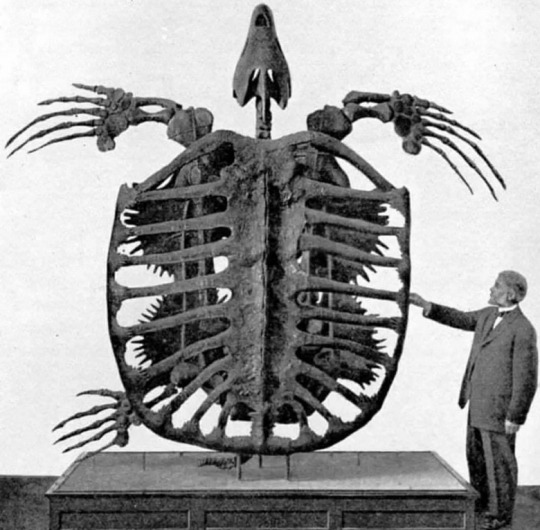
The Yale Peabody Museum of Natural History houses the skeleton of an Archelon ischyros, recognized as the largest turtle to have ever existed. This colossal sea creature bore gear-shaped bones, functioning as stomach bone plates that defended against threats from below. Interestingly, the skeleton displays a missing right lower flipper, with evidence suggesting this was due to an incident in its early life. This injury potentially occurred during its hatchling phase, either from an attempted bird attack as it made its way to the sea or from a larger predator such as a mosasaur or a Xiphactinus. Estimated to have lived for about 100 years, this Archelon ischyros measured an impressive 15 feet (460 cm) from head to tail, spanned 13 feet (400 cm) from flipper to flipper, and weighed a remarkable 4,900 pounds (2,200 kg). Living around 80 to 66 million years ago, these magnificent creatures' fossils were discovered in regions now part of South Dakota and Wyoming, once submerged under a shallow sea during the Late Cretaceous period. Their extinction might be linked to increased predation on their land-based eggs and hatchlings, along with a cooling climate, factors that other turtle species managed to endure due to their adaptive thermoregulation capabilities. #YalePeabody #Museum #skeleton #Archelonischyros #turtle #tortoise #creature #animals #fossils #mosasaur #Xiphactinus #sea #discovered #ancient #history #historical #prehistorical
#Yale Peabody#museum#skeletontortoise#Archelonischyros#turtle#fossils#mosasaur#Xiphactinus#prehistoric#cretaceous
10 notes
·
View notes
Text
Deinosuchus: Giant Alligator or something older?
I know the title sucks, I couldn't think of anything poetic or clever ok? Anyways, still catching up on croc papers to summarize and this one did make a few waves when it was published about a week ago.
"Expanded phylogeny elucidates Deinosuchus relationships, crocodylian osmoregulation and body-size evolution" is a new paper by Walter, Massonne, Paiva, Martin, Delfino and Rabi, with quite a few of these authors having considerable experience with crocodile research. The thesis of the study is both simple and unusual. They suggest that several crocodilians traditionally held as stem-alligators, namely Deinosuchus, Leidyosuchus and Diplocynodon, weren't alligatoroids at all. In fact, if the study holds up they might not have been true crocodilians.
Ok, lets take a step back and briefly look at our main three subjects. Deinosuchus of course needs no introduction, a titan of the Cretaceous also known as the terror crocodile in some more casual sources, its easily one of the most iconic fossil crocodiles. It lived on either side of the Western Interior Seaway during the Campanian, fed on giant turtles and dinosaurs and with size estimates of up to 12 meters its easily among the largest crocodylomorphs who have ever lived.
Artwork by Brian Engh

Leidyosuchus also lived during the Campanian in North America and I would argue is iconic in its own right, albeit in a different way. It's historic to say the least and once housed a whole plethora of species, but has recently fallen on hard times in the sense that most of said species have since then been transferred to the genus Borealosuchus.
Artwork by Joschua Knüppe

Finally there's Diplocynodon, the quintessential croc of Cenozoic Europe. With around a dozen species found from the Paleocene to the Miocene all across Europe, it might be one of the most well studied fossil crocs there is, even if its less well known by the public due to its relatively unimpressive size range.
Artwork by Paleocreations

All three of these have traditionally been regarded as early members of the Alligatoroidea, one of the three main branches that form Crocodilia. In these older studies, Alligatoroidea can be broken up into three groups nested within one another. Obviously the crown is formed by the two living subfamilies, Alligatorinae and Caimaninae, both of which fall into the family Alligatoridae. If you take a step further out you get to the clade Globidonta, which in addition to proper Alligatorids also includes some basal forms with blunt cheek teeth as well as Orientalosuchina, tho jury's still out on whether or not they are truly alligator-relatives. And if you take a final step back and view Alligatoroidea as a whole, then you got our three main subjects neatly lined up outside of Globidonta in varying positions.
Below a highly simplified depiction of previous phylogenies. Deinosuchus, Leidyosuchus and Diplocynodon are often regarded as non-globidontan alligatoroids.
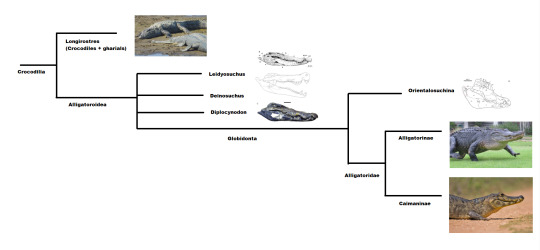
This new study however changes that long standing concensus. The team argues that several features we once thought defined alligatoroids are actually way more common across Crocodilia and even outside of it while also leverging some of the features of Deinosuchus and co. that have always been out of the ordinary. For instance, early alligatoroids are generally characterized as being comparably small, having had short, rounded heads, the afforementioned globular cheek teeth and of course the feature that still allows us to differentiate them from true crocodiles, the fact that they have a clear overbite. Now Leidyosuchus, Deinosuchus and Diplocynodon all have proportionally longer snouts than alligatoroids, their teeth interfinger like in crocodiles and most prominently (and namegiving for Diplocynodon) there is a large notch behind the snout tip that serves to receive two enlarged teeth of the lower jaw. These are of course just superficial examples, but if you wanna get into the nitty gritty check out the paper.
Below a simplified version of the papers phylogeny. Borealosuchus clades with Diplocynodon and Leidyosuchus and Deinosuchus are successive taxa. Planocraniidae are the sister to Crocodilia, which consists of Crocodyloids, Gavialoids (together Longirostres) and Alligatoroids.
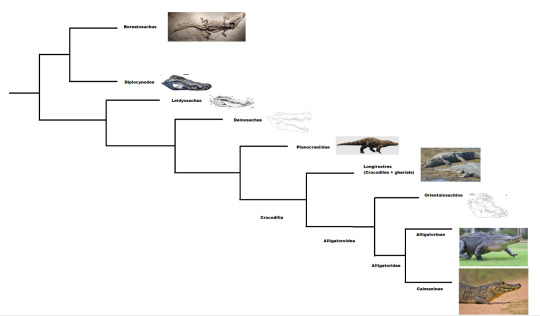
Something also worth addressing in light of these results is salt tolerance in crocodilians and paleogeography. Basically, if you ignore Deinosuchus and co. (or well, just follow this new paper), then it is most likely that alligatoroids originated on the continent of Laramidia, i.e. the western half of America back when it was bisected by an enormous inland sea. Today, alligatoroids are famously intolerant of saltwater, yes, there are instances where alligators have been known to enter coastal waters, but its a far cry from what true crocodiles can achieve (just an example here's my recent post on Caribbean crocodiles). Given that alligatoroids don't appear on Appalachia, the other half of North America, until after the inland sea closes, this very much suggest that this intolerance goes way back. This has however always been at odds with Deinosuchus, which famously showed up along both the eastern and the western coast of the inland sea and at least lived close enough to the coast to leave its mark on the shells of sea turtles. We know it inhabited various near-shore environments and even stable isotope analysis of its teeth points towards it consuming either saltwater or prey that lives in the ocean. To a lesser degree its worth mentioning Diplocynodon, which though usually a freshwater animal has at least one species from coastal deposits. Now I do think its worth highlighting that just being salt tolerant doesn't necessarily mean they can't have been alligatoroids, given that salt glands could have easily been lost after Deinosuchus split off from other alligatoroids. Nevertheless, a position as a stem-crocodilian does add up with it being salt tolerant, with the assumption being that being tolerant to saltwater is basal to crocodilians as a whole and was simply lost in a select few lineages such as alligatoroids.
Given that its range spanned both coastlines of the Western Interior Seaway as well as direct evidence for interactions with marine life, Deinosuchus likely ventured out into the sea from time to time like some modern crocodiles.


There's also the matter of timing. When alligatoroids first appeared 82 million years ago, we already see the classic blunt-snouted morphotype with Brachychampsa and our dear giant Deinosuchus. Now if both were alligatoroids, this would suggest that they've been separate quite some time before that to bring forth these drastically different forms, yet attempts to estimate the divergence date suggest that they split no earlier than 90 million years ago. So if Deinosuchus is not an alligatoroid, then the timeline adds up a bit better. However I think the best example of this new topology really explaining an evolutionary mystery doesn't come from Deinosuchus, but from Diplocynodon. Those that know me might remember that I started working on researching Diplocynodon for Wikipedia, a process that's been slow and painfull both due to the 200 years of research history and the good dozen or so species placed in this genus. Tangent aside, one big mystery around Diplocynodon is its origin. They first appear in the Paleocene and survive till the Miocene, tend to stick to freshwater and oh yeah, species of this genus are endemic to Europe. Given that previous studies recovered them as alligatoroids, nobody was quite sure where Diplocynodon came from. Did they originate in North America and cross the Atlantic? Where they salt tolerant before and simply stuck to freshwater once in Europe? Or are they a much older alligatoroid lineage that entered Europe via Asia after having crossed Beringia. You know, the kind of headbreaking stuff we get when the fossil record is incomplete. But this new study recovers Diplocynodon as being closely related to the non-crocodilian Borealosuchus from the Cretaceous to Paleogene of North America. And that makes some sense, historically the two have been noted to be similar, hell there were even cases when Borealosuchus remains were thought to be North American examples of Diplocynodon. And Borealosuchus has the same double caniniforms as the other crocs we discussed so far. So when our three former alligatoroids got pushed outside of Crocodilia, Diplocynodon ended up forming a clade with Borealosuchus. And since Borealosuchus was wide spread in America by the late Cretaceous, and possibly salt tolerant, then it could have easily spread across Greenland and Scandinavia after the impact, giving rise to Diplocynodon.
The results of this study seem to suggest that Borealosuchus and Diplocynodon are more closely related that previously thought.


And since this is a Deinosuchus paper...of course theres discussion about its size. A point raised by the authors is that previous estimates typically employ the length of the skull or lower jaw to estimate body length, which might not be ideal and is something I definitely agree with. The problem is that skull length can vary DRASTICALLY. Some animals like early alligatoroids have very short skulls, but then you have animals in gharials in which the snout is highly elongated in connection to their ecology. Given that Deinosuchus has a relatively long snout compared to early alligatoroids, size estimates based on this might very well overestimate its length, while the team argues that head width would yield a more reasonable results. Previous size estimates have ranged from as low as 8 meters to as large as 12, which generally made it the largest croc to have ever existed. Now in addition to using head width, the team furthermote made use of whats known as the phylgenetic approach, which essentially bypasses the problem of a single modern analogue with peculariar proportions influencing the result. Now there is a bunch more that went into the conclusion, but ultimately the authors conclude that in their opinion, the most likely length for the studied Deinosuchus riograndensis specimen was a mere 7.66 meters in total length. And before you jump to any conclusions, DEINOSUCHUS WOULD HAVE GOTTEN BIGGER TRUST ME. I know having read "12 meter upper estimate" earlier is quite a contrast with the resulting 7.66 meters, but keep in mind this latter estimate is just one specimen. A specimen that in previous studies was estimated to have grown to a length of somewhere between 8.4 - 9.8 meters. Now yes, this is still a downsize overall, but also given that this specimen is far from the largest Deinosuchus we have, this means that other individuals would have certainly grown larger. Maybe not those mythical 12 meters, but still very large. So please keep that in mind.
Two different interpretations of the same specimen of Deinosuchus. Top a proportionally larger-headed reconstruction by randomdinos, bottom a smaller-headed reconstruction by Fadeno. I do not care to weigh in on the debate other than to say that size tends to fluctuate a lot between studies and that I'm sure this won't be the last up or downsize we see.


Regardless of the details, this would put Deinosuchus in the "giant" size category of 7+ meters, while early alligatoroids generally fall into the small (<1.5 meters) or medium (1.5-4 meters) size categories. The authors make an interesting observation relating to gigantism in crocs at this point in the paper. Prevously, temperature and lifestyle were considered important factors in crocs obtaining such large sizes, but the team adds to that the overall nature of the available ecosystem. In the case of Deinosuchus, it inhabited enormous coastal wetlands under favorable temperature conditions and with abundant large sized prey, a perfect combination for an animal to grow to an enormous size. And this appears to be a repeated pattern that is so common its pretty much regarded as a constant. To quote the authors, "a world with enormous crocodyliforms may have been rather the norm than the exception in the last ~ 130 million years." For other examples look no further than the Miocene of South America, the extensive wetlands of Cretaceous North Africa or even Pleistocene Kenya.
One striking example for repeated gigantism in crocodilians can be found in Miocene South America, when the caimans Purussaurus and Mourasuchus both independently reached large sizes alongside the gharial Gryposcuhus. The illustration below by Joschua Knüppe features some of the smaller earlier members of these species in the Pebas Megawetlands.

So that's it then, case closed. Deinosuchus and co aren't salt-tolerant alligators, they are stem-crocodilians. Deinosuchus was smaller than previously thought and Diplocynodon diverged from Borealosuchus. Leidyosuchus is also there. It all adds up, right? Well not quite. This all is a massive upheaval from what has previously been accepted and while there were outliers before, the alligatoroid affinities of these animals were the concensus for a long time. Future studies will need to repeat the process, analyse the data and the anatomical features and replicate the results before we can be sure that this isn't just a surprisingly logical outlier. Already I heard some doubts from croc researchers, so time will tell if Deinosuchus truly was some ancient crocodilian-cousin or if previous researchers were correct in considering it a stem-alligator. I for one will keep my eyes peeled.
#pseudosuchia#crocodylomorph#eusuchia#crocodilia#crocodile#alligator#deinosuchus#leidyosuchus#diplocynodon#palaeoblr#cretaceous#fossils#prehistory#extinct#long post#science news#croc#gator#borealosuchus#evolution
165 notes
·
View notes
Text
Round 3 - Mammalia - Monotremata




(Sources - 1, 2, 3, 4)
Our first and most ancient living order of mammals is Monotremata. There are five living species of monotreme: one Platypus (image 1) and four echidnas. These are the Short-beaked Echidna (Tachyglossus aculeatus) (gif below), Attenborough’s Long-beaked Echidna (Zaglossus attenboroughi) (image 4), the Western Long-beaked Echidna (Zaglossus bruijnii) (image 2), and the Eastern Long Beaked Echidna (Zaglossus bartoni) (image 3).
Monotremes have structural differences in their brains, jaws, digestive tract, reproductive tract, and other body parts, compared to many other mammals, though they are most often differentiated by the fact that they are the last remaining order of mammals to lay eggs. All living species lack teeth as adults, though platypuses have them as babies. All living species have spurs on their hind limbs, though they are vestigial in echidnas. In male platypuses they are attached to venom glands and contain venom powerful enough to kill predators as large as a dog. Monotremes have 400-40,000 electroreceptors on their snouts, depending on species, which they use to locate invertebrate prey buried beneath sediment. All living species of monotremes are indigenous to Australia and New Guinea, though Cretaceous species were also found in South America.
Monotremes possess five pairs of sex chromosomes and one of the X chromosomes resembles the Z chromosome of birds, suggesting that the two sex chromosomes of other mammals evolved after the split from the monotreme lineage. Like reptiles, monotremes have a cloaca, which is a single opening for both reproduction and waste removal. However, urine is excreted through the cloaca while semen passes through the male monotreme’s penis. The monotreme penis is similar to that of turtles and is covered by a preputial sac. Monotreme eggs are soft-shelled and leathery. They are retained for some time within the mother and receive nutrients directly from her, generally hatching within ten days after being laid. Newly hatched monotremes are called “puggles,” and are fetus-like, with relatively well-developed forelimbs that enable them to crawl around. Female monotremes do have mammary glands and nurse their young with milk, though they lack teats. Instead, mother monotremes lactate via pores in their skin, “sweating” out the milk. All five living species show prolonged parental care of their young, with low rates of reproduction and relatively long life-spans.
Monotremes arose in the Early Cretaceous. Some of the oldest known platypus-like fossils are Steropodon and Dharragarra of the Late Cretaceous. Our living platypus is also known from Pliocene fossils.
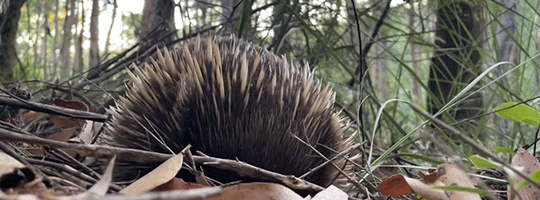
Propaganda under the cut:
Monotremes maintain a lower average temperature than most mammals, conserving energy by "switching off" their temperature regulation and going dormant in cold weather.
The tongues of long-beaked echidnas (genus Zaglossus) have sharp, tiny spines that help them capture their termite, ant, and worm prey. Since they have no teeth, they break down their food by grinding it between the bottoms of their mouths and their tongues.
Monotreme milk contains a highly expressed antibacterial protein not found in other mammals.
Monotremes are the only mammals (apart from the Guiana Dolphin [Sotalia guianensis]) known to have a sense of electroreception, and the Platypus's electroreception is the most sensitive of any monotreme.
In the American animated series Phineas and Ferb, the title characters own a pet bluish-green Platypus named Perry who, unknown to them, is a secret agent. Coincidentally, and unbeknownst to show creator Dan Povenmire at the time, real platypuses biofluoresce a similar cyan colour when seen under ultraviolet lighting!
The longest recorded lifespan for an echidna in human care was 50 years, with anecdotal accounts of wild individuals reaching 45 years.
Venom production rises among male Platypuses during the breeding season, and it may be used to assert dominance.
I’m really sorry about more penis talk but we’re all adults here I hope. So… male echidnas have a four-headed penis, covered in penile spines. During mating, the heads on one side "shut down" and do not grow in size; the other two are used to release semen into the female's two-branched reproductive tract. Each time it copulates, it alternates heads in sets of two. When not in use, the penis is retracted inside a preputial sac in the cloaca. During mating season, a female may be followed by a line or "train" of up to ten males, the youngest trailing last, with some males switching between lines.
In 1799, the first scientists to examine a preserved Platypus body deemed it a hoax made of several animals sewn together.
Echidnas are very timid. When frightened, they attempt to partially bury themselves and curl into a ball similar to a hedgehog. Strong front arms allow echidnas to dig in and hold fast against a predator pulling them from the hole.
The rarest species of monotreme is the critically endangered Attenborough's Long-beaked Echidna (Zaglossus attenboroughi). It had only been seen once in 1961 in the Cyclops Mountains of the Indonesian province of Papua. It was thought to be extinct until some of its "nose pokes" (holes from the echidna’s nose poked into the ground as it searches for earthworms) were found in the mountains during an expedition in 2007. Finally, in November 2023, the first video footage of a living individual was recorded (image 4).
The Platypus holds special meaning as a totem animal for the Watiwati people, who live along the Murray River.
#SORRY I FORGOT TO EDIT THE POLL TO SAY MONOTREMATA INSTEAD OF X AND I CAN’T CHANGE IT NOW 😭#idk how I missed that ;_;#Mammalia#animal polls#Round 3
135 notes
·
View notes
Text

Suchomimus, meaning "crocodile mimic," was a spinosaurid dinosaur that lived during the Early Cretaceous period, approximately 125 to 112 million years ago. Its name reflects its crocodile-like skull, which was long and shallow, ideal for catching fish. Discovered in Niger, Africa, by paleontologist Paul Sereno and his team in 1997, the dinosaur's remains were found in the Elrhaz Formation, a region known for its rich fossil deposits. Suchomimus was a large theropod, measuring between 9.5 and 11 meters (31–36 feet) in length and weighing up to 3.8 metric tons. Its forelimbs were robust, equipped with giant claws, and it had a low dorsal sail along its back formed by elongated neural spines.
This dinosaur's diet primarily consisted of fish, supported by its specialized teeth and jaw structure. It likely inhabited fluvial environments, such as floodplains, alongside other dinosaurs, pterosaurs, and aquatic creatures like bony fishes and turtles. Some paleontologists suggest that Suchomimus might be an African species of the European spinosaurid Baryonyx, or even a junior synonym of Cristatusaurus lapparenti, though these classifications remain debated. Its discovery has provided valuable insights into the diversity and adaptations of spinosaurid dinosaurs.
Suchomimus' anatomy suggests it was well-suited for a semi-aquatic lifestyle, wading in shallow waters to hunt prey. Its powerful arms and claws may have been used to catch fish or other small animals. The discovery of Suchomimus has highlighted the evolutionary link between dinosaurs and modern reptiles, showcasing how certain species adapted to specific ecological niches. This fascinating creature continues to be a subject of study, shedding light on the complex ecosystems of the Early Cretaceous.
#art#drawing#illustration#sketch#artwork#artist#dino#dinosaur#dinosaurs#prehistoric#extinct#paleoart#paleontology#theropod#spinosaurid#suchomimus#baryonyx#reptile
25 notes
·
View notes
Text
Fossil Friday: Archelon
Apparently, there is a sea turtle protection society in Greece by this name which is cool but I a here to talk about the ACTUAL sea turtle called Archelon ischyros. Archelon lived in the Late Cretaceous Period about 80-74 Ma. At the time, the American Midwest was overed by the Western Interior Seaway.
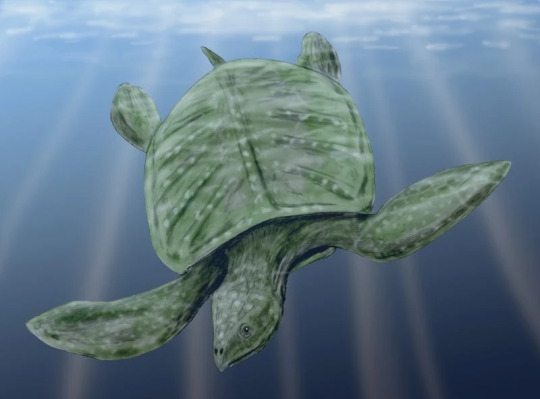
It was discovered by American paleontologist George Reber Wieland in 1895 in the Pierre Shale, a rock formation made of mostly, well, you guessed it, shale. Shales accumulate at depth in ocean basins.
Archelon lived alongside the mosasaur Platycarpus,

sharks,

(Squalus)
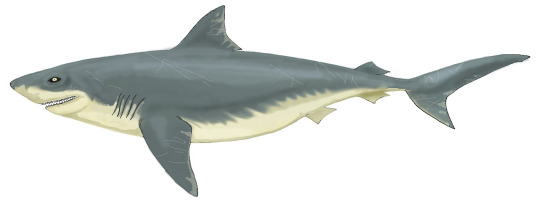
(Squalicorax)
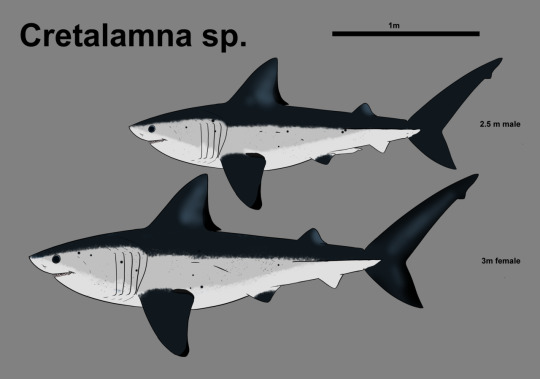
predatory ray-finned fish, Xiphactinus,
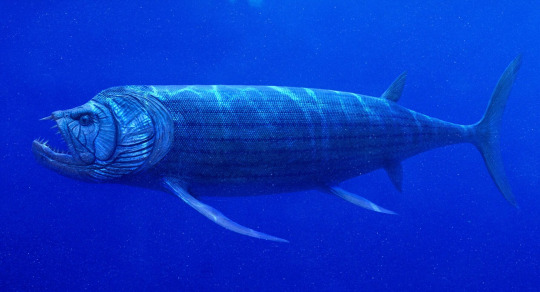
and an array of ammonites.
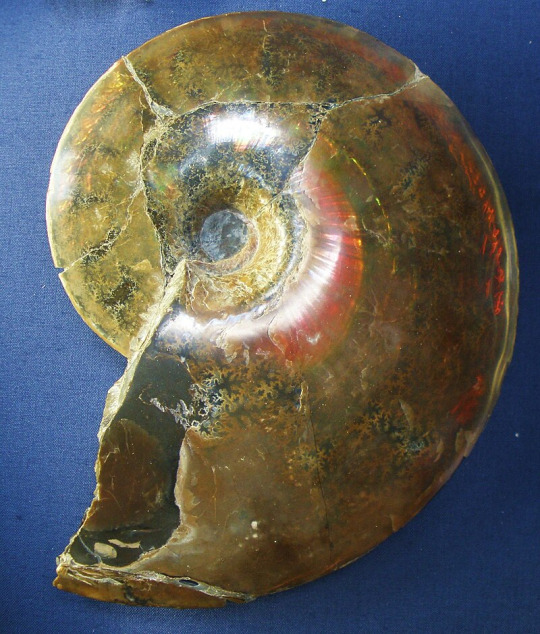
(Planticeras)

(Scaphites)
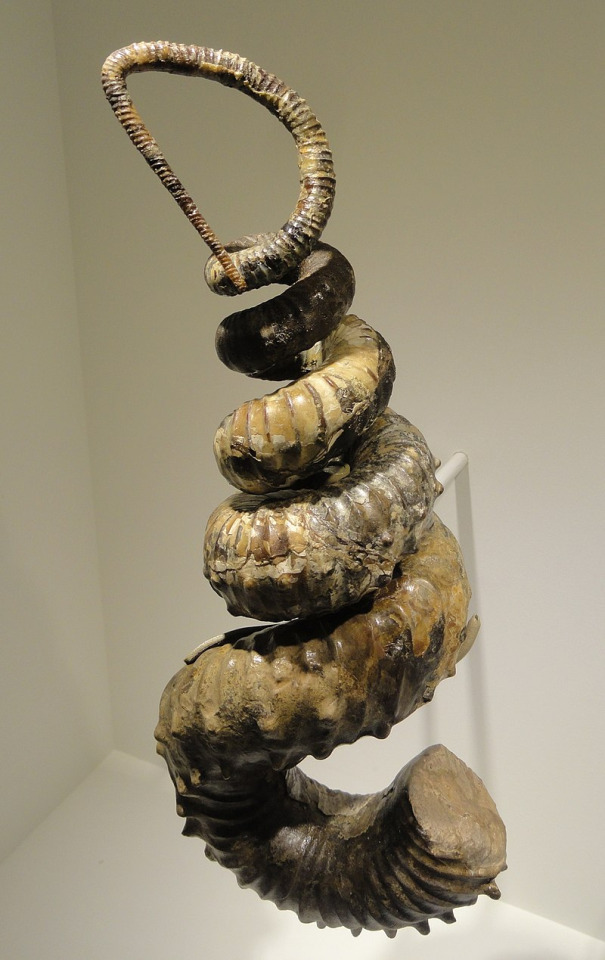
(Didymoceras)
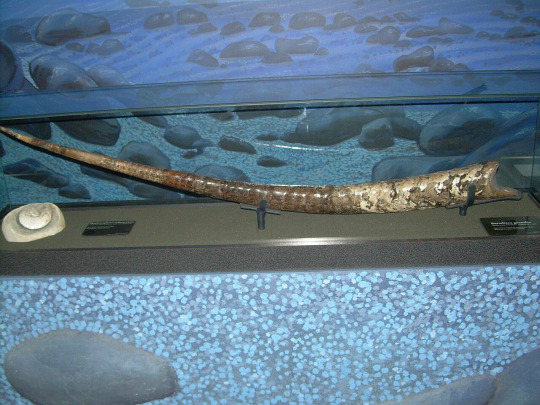
(Baculites)
Turtle phylogeny has been hotly contested for a long while thanks to their very strange morphologies (lacking extra openings in the skull, ribs and vertebrae expanding to create a shell). As of right now, most studies put them somewhere between lepidosaurs (lizards and snakes) and archosaurs (crocs and birds). It's debatable which they are closer to.
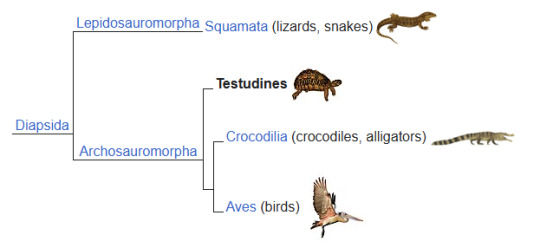
Either way, Archelon falls solidly into testudines, specifically in the clade protostegidae. This clade is completely extinct but their closest living relatives are living sea turtles.
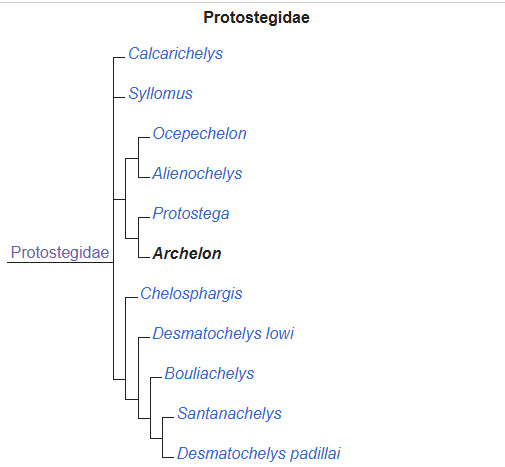
Archelon was the largest turtle to have lived at 11.5 ft long (352 cm). The largest specimen named Brigitta reached 15 ft (4.6m) in length. It had a pronounced hooked beak like a bird of prey indicating it was an obligate carnivore (must eat meat).

It's weak front flippers are similar to cheloniids (a group of living marine turtles) and indicate it probably preferred calm shallow waters to the deep sea. (Then again, it may be more like the Leatherback Sea Turtle than we realize and was a moderately good swimmer that could chase prey in the open ocean).
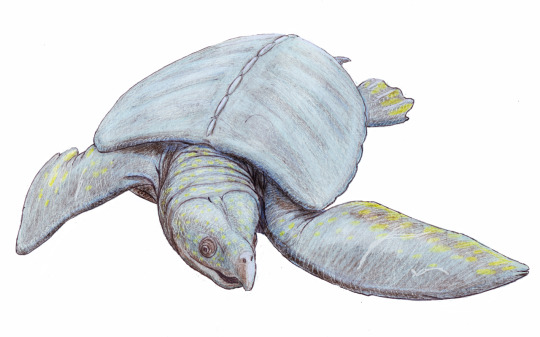
Overall, Archelon is a pretty cool animal. Have a good weekend and tune in Monday for another shiny metal. Fossilize you later!
#paleontology#fossils#fun facts#geology#science#science education#march madness#turtles#archelon#sea turtles#fossilfriday
27 notes
·
View notes
Text
Coon Creek Formation, Tennessee






The Coon Creek Formation is a Late Cretaceous rock unit in western Tennessee. At the type-locality near Enville, Tennessee, this formation is an internationally-recognized Lagerstätte— which simply means that it is an area of excellent fossil preservation.
📍Location 🗺️
The type-locality, where the formation was described, is located near Enville, Tennessee, in the Coon Creek. Although the naming might sound suspicious (especially given the South’s racist history), this creek was actually named for the numerous raccoons that call the forest home. I’ve attached a picture of some raccoon tracks I found on the banks of the creek!
🪨 Geology ⛏️
This unit was initially a member of the Ripley Formation (Late Cretaceous rock unit that exists as part of the Cretaceous Belt in Mississippi and Alabama). In 1975, geologist Ernest E. Russell raised this unit to formation status.
The dark gray rock (a very fine- to fine-grained sandy marl) pictured above comprises the lower, fossiliferous unit of the Coon Creek Formation. Marls, by definition, are silty-clays/clayey-silts that are rich in calcium carbonate. This marl has a particularly high clay content which, coupled with the regional river drainages pumping sediment into the paleo-Mississippi Embayment, ensured that deceased organisms were buried rapidly.
🦕 Paleontology 🦖
The Coon Creek Formation represents sediment deposition in a shallow marine environment proximal to the shoreline. As such, the fossils found here are those of sea-dwelling organisms, including: mollusks (clams, oysters, cephalopods, sea snails), arthropods (shrimp, lobsters, crabs), echinoderms (urchins), and vertebrates (fish, sharks, turtles, and marine reptiles). Fragmentary dinosaur fossils have been found in the Coon Creek Formation, though they are quite rare.
The state fossil of Tennessee— a clam called Pterotrigonia thoracica— can be found in abundance throughout the creek.
🏕️ The Coon Creek Science Center (CCSC) 🔭
The CCSC is a 240-acre field station owned by the Memphis Pink Palace Museum and operated by the University of Tennessee at Martin. The CCSC also hosts the type-locality for the Coon Creek Formation.
The science center has a museum, field laboratories, bunk facilities, mess hall, weather station, and astronomy observing capabilities. On the third Saturday of each month, they host a Community Day, where people are welcomed into the creek to collect fossils for themselves. Afterwards, the on-site paleontologists will help you to identify your finds and teach you the basics of fossil preparation! I highly recommend this to anyone who wants a real hands-on experience in fossil hunting.
#fossils#geologist#geology#paleontologist#paleontology#rocks#scicomm#science#outdoors#nature#tennessee#geoscience#earth science
27 notes
·
View notes
Text
Archovember 2024 Day 25 - Pteranodon longiceps
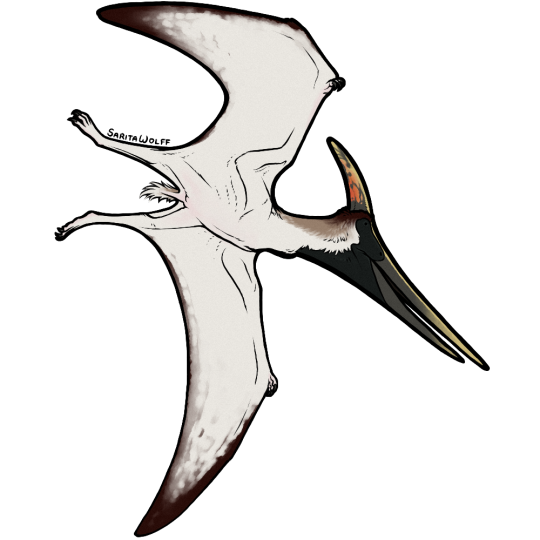
As one of the main species to make up the mythical “Pterodactyl” conglomerate, Pteranodon longiceps is possibly the most familiar pterosaur to the public. However, most people don’t know much about the real animal behind the pop culture monster. Living in the Late Cretaceous USA, Pteranodon is also the most well-known pterosaur to science, as over 1,200 specimens have been found! It was the first pterosaur found outside of Europe, the first toothless pterosaur found, and, before the discovery of the giant azhdarchids, was also the largest pterosaur known. Pteranodon is also one of the few prehistoric animals with confirmed sexual dimorphism, and it’s a bit extreme to boot! The larger male Pteranodons had huge pointed crests and an average wingspan of 5.6 m (18 ft), while the smaller female Pteranodons had small, rounded crests, wider pelvic canals, and an average wingspan of 3.8 m (12 ft).
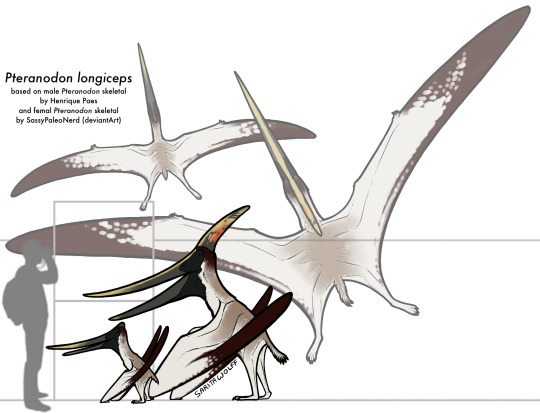
Pteranodon lived around the Western Interior Seaway, a massive sea that split North America in two during the Late Cretaceous into the Early Paleocene. With wings shaped like modern day albatrosses, Pteranodons were likely gliders who relied on thermals, but did seem to be more capable of sustained flapping. As one would expect, their diet was made up mostly of fish, though they may have eaten invertebrates as well. With their more heavy build, they could probably dive into the water like modern day gannets, folding up their wings and plunging beneath the waves, snatching up fish with their pointed, birdlike beaks. Pteranodon crests were most likely for display, as there was variation between not only males and females, but also individual males. As females were twice as common as males, they were probably polygynous, with males competing for the mating rights in rookeries of females. Competition was likely not physical, and instead would depend on females determining the age and fitness of males based on the size of their crest.
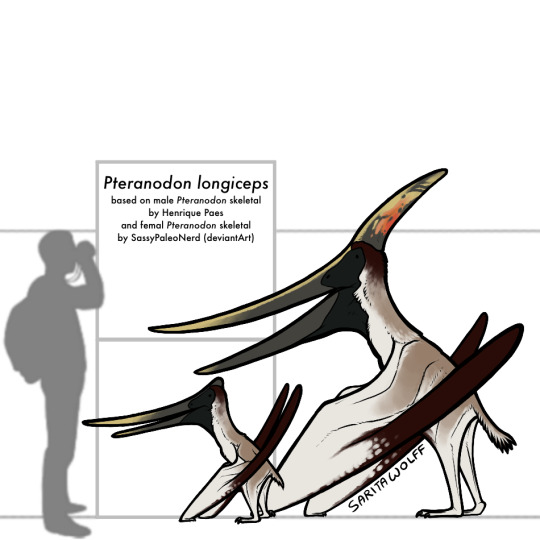
Pteranodon has been found in both the Niobrara Formation and the younger Pierre Shale Formation. Some possible fragments from the Mooreville Formation and Merchantville Formation also exist. While Pteranodon was much more common, it would have lived alongside, and possibly competed with, the fork-crested pterosaur Nyctosaurus and the toothed seabird Ichthyornis. It is probable that Pteranodon lived in offshore rookeries, raising their flaplings far from land-based predators, as most fossils are found far from what would have been the Interior Seaway’s coastline. Under the waves, Pteranodon would have hunted a variety of fish, ammonites, and squid. It would have come across sea turtles such as Toxochelys, plesiosaurs such as Styxosaurus, and flightless birds like Parahesperornis. It would have had to look out for mosasaurs like Tylosaurus and sharks like Cretoxyrhina. Aside from birds, most Pteranodons would rarely come across dinosaurs. Their main exposure to dinosaurs would be corpses, like that of the hadrosaur Claosaurus, being swept out to sea.

This art may be used for educational purposes, with credit, but please contact me first for permission before using my art. I would like to know where and how it is being used. If you don’t have something to add that was not already addressed in this caption, please do not repost this art. Thank you!
#Pteranodon longiceps#Pteranodon#pteranodontid#pterosaurs#archosaurs#archosauromorphs#reptiles#Archovember#Archovember2024#Dinovember#Dinovember2024#SaritaDrawsPalaeo#Late Cretaceous#USA#Niobrara Formation#Pierre Shale Formation#Mooreville Formation#Merchantville Formation
42 notes
·
View notes
Text

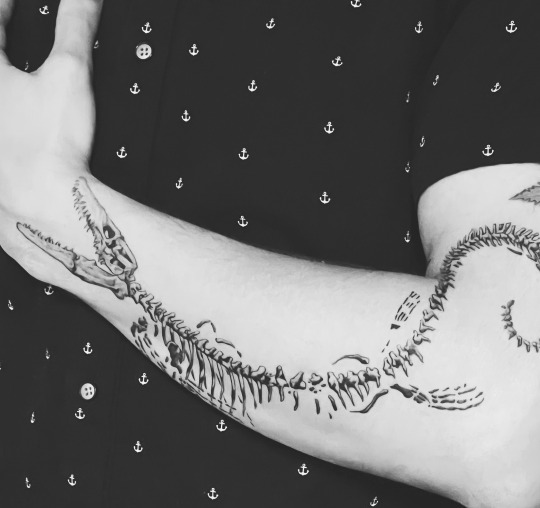

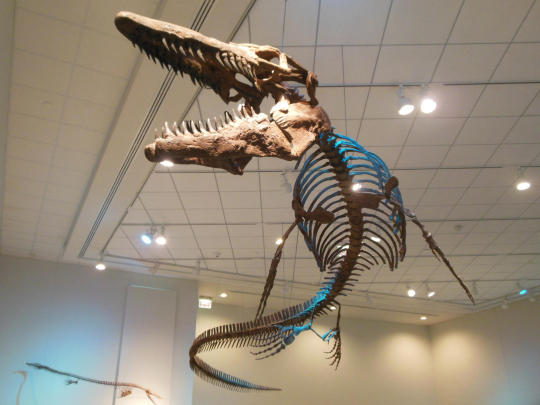

Moving onto my lower arm as work on my prehistoric sleeve continues, take a look at the most recent piece – a fossilized skeleton of Tylosaurus! This large, predatory marine reptile from the Late Cretaceous is a genus of mosasaur and is closely related to modern-day monitor lizards and snakes. 🦎🐍
In fact, Tylosaurus was one of the largest mosasaurs of all time. A number of specimens have measured between 39-52 ft long, and experts believe that a maximum length of 66 ft wouldn’t be out of the question! These giant marine carnivores were also apex predators and are documented to have eaten turtles, birds, bony fish, giant squid, sharks, plesiosaurs, and even other mosasaurs! Now I can pay tribute to one of evolution’s most well-designed killing machines with this amazingly detailed forearm tattoo!
#mosasaurus#mosasaur#tylosaurus#paleontology#fossil#fossils#skeleton#tattoo#tattoos#arm tattoo#tattoo sleeve#dinosaur#dinosaurs#dino#dinos#when dinosaurs ruled the earth#prehistoric#tattoo ideas#tattoo inspiration#tattoo illustration#tattoo ink#new tattoo#tattoo art#tattoo therapy
156 notes
·
View notes
Text
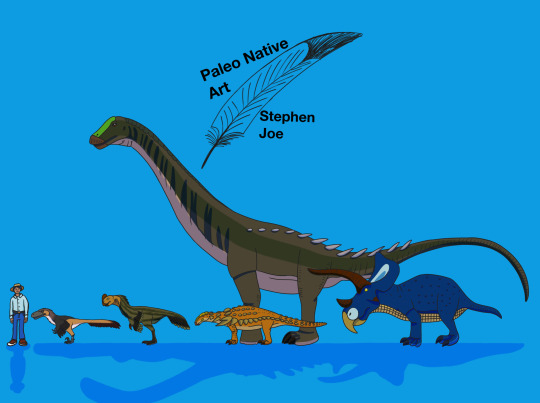
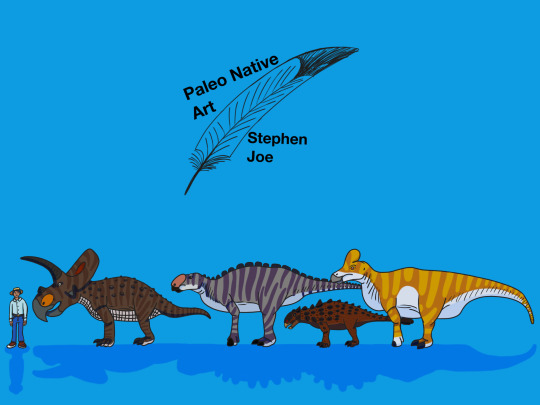

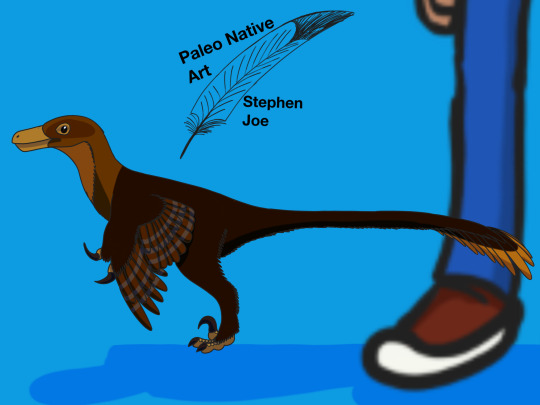
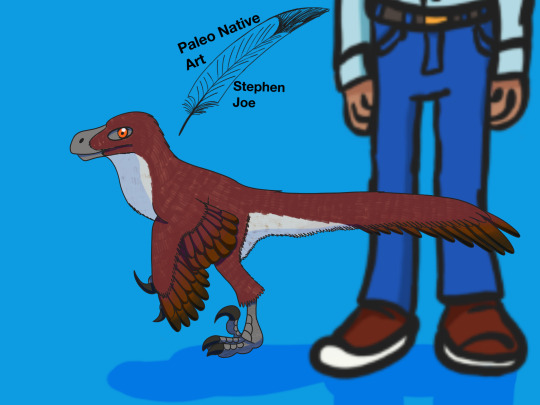
The Dinosaurs of the Ojo Alamo formation
Time for more to make a non-avian dinosaurs of the late Cretaceous period set in the heart of San Juan county, New Mexico. In fact, it’s very similar to northern laramidia such as Hell creek formation with subtropical warm and humid climate, and Lance formation with bayou environment. But unlike two other formations, Ojo Alamo formation has a lush floodplain dominated by wetlands and riparian forests. Home to the fossilized Cretaceous fishes, amphibians, turtles, squamates, crocodilians, and mammals.
As for the non-avian dinosaur species themselves, there were 5 species are officially valid (but one of them is possibly a nomen dubium). The rest however are indeterminate and unnamed species.
From left to right:
* Dineobellator notohesperus
* Ojoraptorsaurus boerei (nomen dubium as of 2025)
* Glyptodontopelta mimus
* Alamosaurus sanjuanensis
* Ojoceratops fowleri
As I said before, along with the other species of naashoibito member, they were unnamed or confer (Cf) other species of non-avian dinosaurs that were yet to describe.
From left to right (Herbivores side & Carnivores/Omnivores side)
* Ceratopsidae indet (An torosaurus-like chasmosaurine indet.)
* Hadrosauridae indet (Originally attended as Kritosaurus navajovius, but now its unknown species as “kritosaurini” indet.)
* Ankylosauridae indet (Noted as being similar to Ankylosaurus and Euoplocephalus.)
* Lambeosaurini indet (Noted as being similar to Corythosaurus and Hypacrosaurus.)
* Richardoestesia sp. (A few isolated teeth specimens.)
* Dromaeosauridae indet (An isolated teeth of the Saurornitholestinae indet similar to acheroraptor, but not as sharp as the latter.)
* Troodontidae indet (Isolated teeth specimens.)
* Ornithomimidae indet
* Tyrannosauridae indet (Formerly known as “Alamotyrannus brinkmanni.” Either Cf. Tyrannosaurus sp or possibly a new taxon species that is similar to Bistahieversor as closely related.)
For last but not surly least, it’s a same navajo man from my previous old art is back as sized scale for larger and smaller scale projects.
But the only these two are still there but ultimately not included were Caenagnathidae indet and Ankylosauria (possibly Nodosauridae) indet, due to both similarities of Ojoraptorsaurus and Glyptodontopelta which are distinct from other species.
Used skeletons of different species as references, belongs to Scott Hartman, Fadeno, GetAwayTrike, Jaime A. Headden, LancianIdolatry, Greg S. Paul, and Henry Sharpe Art.
#my art#myart#dinosaur#paleoart#my drawings#dinosaurs#dinosauria#ojo alamo formation#late cretaceous#theropod#sauropod#ornithischians#naayéé#navajo#sketchbook app#artists on tumblr#paleontology#fossil friday
12 notes
·
View notes
Text
Fish of the Day
Today's fish of the day is the Freshwater Plesiosaur!
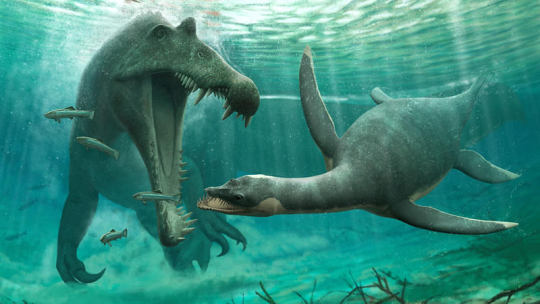
The freshwater plesiosaur was requested by Jasper, thank you Jasper! Plesiosaurus as a marine reptile, well known for their prowess as apex predators, but freshwater plesiosaurs are a relatively new idea. Based on the finding of a couple of fossils in what is now Morocco's Sahra desert river system, specifically an area called the Kem Kem beds. These fossils are scattered, showing us that this is not just the bones of one animal but a group of freshwater plesiosaurs that lived in the area, at least a dozen of them. The finding of many teeth in particular shows that these animals didn't just swim in from the ocean temporarily, but lived in the area long enough to shed teeth. This has led to some theories that the popular cryptid, The Loch Ness Monster, may be a freshwater plesiosaur, although no fossils have been yet found in that area. Although this does not confirm their existence it raises a strong argument for them. However, with limited knowledge about them for the time being, let's go over plesiosaurs in general!
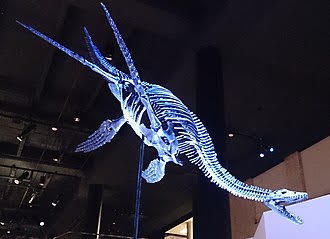
Found and named in the early 1800's the plesiosaur, from order Plesiosauria, is thought to have first appeared in the late Triassic Rhaetian stage, about 203 million years ago. These animals went extinct about 66 million years ago, to the Cretaceous-Paleocene extinction event. How they swam is still up for debate, many favor the theory that they had wide range with each of their fins, and had identical strokes, but other theories are that they may have used only the fore or hind fins for locomotion, or perhaps used them in reciprocal movement. Similar debate exists for how these animal may have dived, although we know they dived for food, as signs of decompression sickness have been found. As apex predators they ate through anything they could get close to, small fish, larger fish, sharks, cetaceans, crustaceans, one another. It is found that although they were certainly near the top of the food chain, some of them were still occasionally prey for large sharks, but mostly they fell to one another, larger plesiosauria hunting smaller. It is thought they evolved to fill the niche left open by the extinction of Ichthyosaurs, which died out in the late Cretaceous, and allowed for diversification to take place in Plesiosauria. Plesiosauria during this era evolved two distinct morphological types: the pliosauromorph build, the Pliosauroidea family, and the plesiosauromorph build, the Plesiosauroidea family.
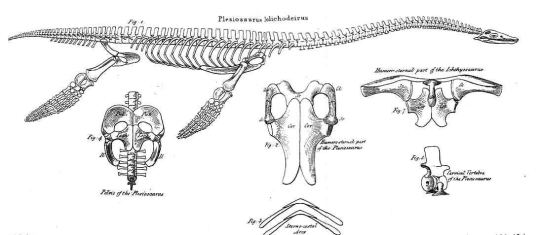
Pliosauroidea is defined by their large heads and short necks, often compared to the build that crocodiles have. They are also known for having larger hind flippers than other plesiosaurs and can be found mostly across South America, and along the equator, although some fossils have been found as far north as Norway. The largest genus found so far, the Liopleurodon, is as large as 6 feet 5 inches, or just a little under 2 meters.

Plesiosauroidea was defined by the long skinny neck, which was used to hunt in small holes, and could move fast to snap up small marine animals nearby them. Although Plesiosauroidae is often depicted as a fast moving predator, it is found that they were likely slow swimmers, pushing their way through the water similar to the swimming methods of turtles, staying close to the surface and using their four limbs for mobility, making it easy to snap at nearby animals. Despite the common displays of them in swan-like positions, with the head raising out of the water, this is unrealistic, as they could not raise their heads up to a degree like that, and the weight of the muscles would prevent them from surfacing. The size difference between differing species was huge, as some could be only as large as 3 meters to 20 meters in length. It is currently thought that the freshwater finds belong to Plesiosauridea.
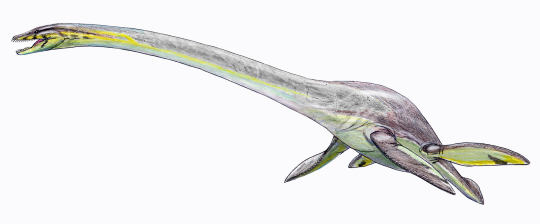
Everyone have a good day!
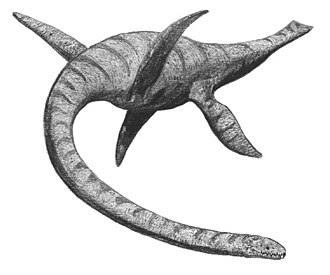
#fish#fishblr#fishes#fishposting#aquatic biology#aquatic#marine biology#ichthyology#marine animals#marine life#freshwater#freshwater fish#animal#animals#animal facts#fish of the day#information#education#nature#river#paleo#paleontology#plesiosaur#plesiosaurus#freshwater plesiosaur#Plesiosauria#Pliosauroidea#Plesiosauroidea
29 notes
·
View notes
Photo

Large Turtle Shell Fossil (Pleurosternum obvata) - Cretaceous, UK | Genuine + COA
Authentic Large Section of Pleurosternum obvata Turtle Shell Fossil – Durlston Formation, Cretaceous
This is a genuine large section of Pleurosternum obvata turtle shell fossil, carefully excavated from the Durlston Formation, Purbeck Beds, at Durlston Bay, Swanage, Dorset, UK. This incredible fossil dates back to the Cretaceous Period, approximately 145–100 million years ago, providing a rare glimpse into the ancient reptiles that once inhabited prehistoric ecosystems.
Guaranteed Authenticity: All of our fossils are 100% genuine and come with a Certificate of Authenticity. The specimen shown in the images is the exact fossil you will receive.
Fossil Information:
Scientific Name: Pleurosternum obvata
Location: Durlston Bay, Swanage, Dorset, UK
Formation: Durlston Formation, Purbeck Beds
Geological Age: Cretaceous (~145–100 million years ago)
Discovered By: Alister & Alison (Our Expert Fossil Hunting Team)
Discovery Date: 01 December 2024
Preparation: Expertly cleaned, prepped, and treated by Alison to enhance preservation and detail
Size & Presentation:
Scale cube = 1cm (see photos for accurate sizing)
Specimen dimensions provided in listing images
Perfect for: ✔ Fossil Enthusiasts & Collectors ✔ Educational Use & Teaching ✔ Unique Gifts for Paleontology Lovers ✔ Museum & Display Collections ✔ Natural History Exploration
Own a remarkable and rare piece of prehistoric reptilian history today! Fast & Secure Shipping Available.
#Turtle shell fossil#Pleurosternum obvata#Cretaceous fossil#Durlston Formation#Purbeck Beds#Durlston Bay fossil#Swanage fossil#UK fossils#genuine fossil#prehistoric turtle#fossilized shell#natural history#paleontology#collectible fossil#rare fossil specimen#fossil collector#museum quality fossil#reptile fossil#ancient marine life
0 notes
Text
COOL ZOOLOGY STORIES OF 2023
Happy New Year! At the start of 2022 I put together a list of some cool zoology-related news stories from 2021, and after... kind of forgetting to put a list together for 2022, I wanted to do the same for 2023. Here are some of my favourite animal-related news stories from the past year (plus one plant-related story, as a treat.)
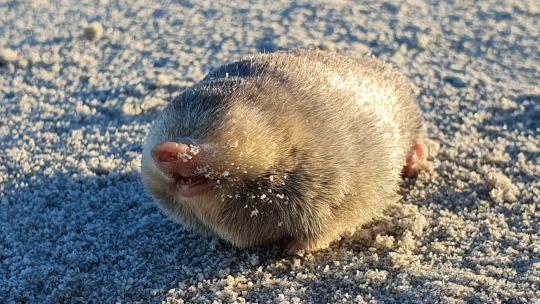
An elusive little mammal was spotted for the first time in nearly a century
Species Concerned: De Winton's Golden Mole (Cryptochloris wintoni)
Family: Golden Mole Family (Chrysochloridae)
Source(s): here and here
A small, superficially mole-like animal seemingly found only in the area around Port Nolloth, South Africa, De Winton’s Golden Mole has long been feared to be extinct due to a total lack of confirmed sightings since 1937. This changed in November of 2023, when (after years of extensive searching) a De Winton’s Golden Mole was found alive for the first time in 87 years, and was photographed for the first time ever.
Though similar to moles in both appearance and behaviour, golden moles are actually part of a separate and only distantly related group of mammals known as Afrosoricidans (alongside tenrecs and otter shrews) that have independently developed mole-like bodies to exploit a similar ecological niche – with massive, shovel-like front paws, short limbs, protective “shields” of toughened skin on their heads and non-functional eyes covered by skin to protect them from irritation, members of this family are adapted to burrowing, and in most cases will spend their entire lives underground unless disturbed. Due to the scarcity of sightings very little is known about the biology of De Winton’s Golden Mole, but based on its sandy coastal habitat and the behaviours of its closest relative, the Van Zyl’s Golden Mole (Cryptochloris zyli) it is likely that members of this species live solitary lives and use their digging abilities to “swim” through sand, preying on insects and small vertebrates which they detect using unique structures in their inner ears that are highly sensitive to vibration.
In addition to conventional habitat surveys within De Winton’s Golden Mole’s presumed range, the team responsible for this species’ rediscovery also utilized several newer or more unusual strategies to search for their focal missing mammal, including thermal imaging to detect underground body heat and the testing of soil and sand in the area for eDNA (tiny amounts of genetic material that organisms leave in water, soil and on other surfaces, giving insight into which species are found in an area without having to actually spot them.)
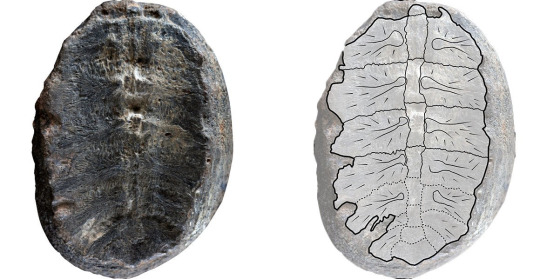
An "ancient plant" turned out to be a baby turtle
Species Concerned: "Turtwig" Cretaceous Turtle
Family: Unknown
Source(s): Here and Here
In 2003, a priest and fossil collector named Gustavo Huertas identified what he believed to be the fossilised remains of a tiny plant of the extinct genus Sphenophyllum in cretaceous-era rocks near Villa de Leyva, Columbia, and named the new species Sphenophyllum colombianum. Huertas' find was unusual in that it dated to the early Cretaceous period (making it over 100 million years younger than other Sphenophyllum species, the last of which are believed to have gone extinct in the late Triassic period,) and it was the fossil's unusual age that drew the attention of Fabiany Herrera, a curator of plant fossils at the Field Museum of Natural History in Chicago, USA and Héctor Palma-Castro, his student. After taking an interest in the fossil the two travelled to the Universidad Nacional de Colombia in Bogotá, Columbia where the fossil was held in order to inspect it, and after realising that its features were unlike other Sphenophyllum species and consulting a vertebrate palaeontologist, Edwin-Alberto Cadena, they eventually came to realise that what Huertas had found was not a Sphenophyllum species, or event a plant - what had originally been interpreted as the stems and leaves of a plant were actually the ribs of a very small, and likely very young, prehistoric turtle.
The ribs of turtles are located on the upper surface of their shells, where they form a sort of "roof" that strengthens the shell's outer carapace. Newly hatched turtles have fragile bones and shells that are easily broken beyond recognition during fossilization, so finding the well-preserved remains of a young turtle (estimated to be less than 1 year old when its bones were buried) is very rare. The discovery of the true identity of "Sphenophyllum colombianum" was published (here) in early December 2023, and as such the newly discovered turtle fossil has yet to be given a new name. Instead, it has been affectionately dubbed "Turtwig", after the half-plant-half-turtle gen 4 starter Pokemon, until it can be formally reclassified.
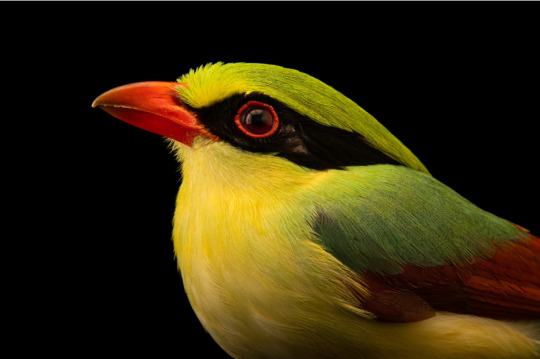
The Indochinese Green Magpie became the Photo Ark's 14,000th species
Species Concerned: Indochinese Green Magpie (Cissa hypoleuca)
Family: Crow Family (Corvidae)
Source: Here
The National Geographic Photo Ark is an ambitious project led by Canadian photographer Joel Sartore which aims to photograph every species held in captivity worldwide, providing high-quality images of often relatively obscure species and raising awareness of each species involved. In 2021 the Arabian Cobra became the 12,000th species added to the ark, in 2022 the Spoon-Billed Sandpiper became the 13,000th, and as of May 2023 the Indochinese Green Magpie has become the 14,000th species Sartore and his team have photographed.
Unlike the vast majority of crow species, the 4 species in the genus Cissa, known collectively as green magpies, are brightly coloured, largely carnivorous birds with vivid green feathers and bright red beaks and feet which are thought to aid them in camouflaging against the leaves and bark of the dense, humid forests they typically inhabit. The Indochinese Green Magpie, which is found in densely forested areas from central China to southern Cambodia, is one of the most common green magpie species, but is still believed to be experiencing a decline in population size due to the intense demand for members of this species in the illegal wildlife trade, both for their feathers and to be kept as illegal pets. The model for Sartore's photo, a female named Jolie, was herself found in a suitcase that was intercepted while being smuggled through the Los Angeles International Airport, and is now kept Los Angeles Zoo and Botanical Gardens. The team behind the Photo Ark have expressed hopes that Jolie's picture and story will help to raise awareness of the harmful effects of the illegal exotic pet trade and its prominence within the USA. On a happier note, the photo also seems to show that Jolie is now doing well - green magpies kept in captivity have been known to sometimes take on a duller colouration due to a lack of carotenoids in their diet, so her natural green feathers are an indicator of good health.

A very rare, very weird plant was rediscovered after 30 years
Species Concerned: Thismia kobensis
Family: Burmannia Family (Burmanniaceae)
Source(s): Here, here and here
In 1992, a bizarre-looking plant was found growing near the city of Kobe in Japan; pale and partially transparent without any leaves or chlorophyll, it was a member of the genus Thismia and was notable for being found further north than any other Asian species in the genus to date. A single plant was collected and taken to the Museum of Nature and Human Activities in the nearby city of Sanda, and in 2018 extensive examination of this single preserved plant led to it being determined to be a previously undocumented species, Thismia kobensis. This discovery led to surveys being dispatched to the area where the species was originally discovered in hopes of gathering additional samples and learning more about T. kobensis in the wild, but after surveys of the area were unable to find any remaining individuals, and following the discovery that the site from which the original sample had been collected had been converted into an industrial complex since the 1990s, the species was feared to have gone extinct. In February of 2023, a team of researchers led by Kobe University's Professor Kenji Suetsugu announced the first documented sighting of Thismia kobensis in 31 years, having found a small population growing in Sanda, not far from the museum that holds what had long been the only known specimen of the species and roughly 30km (18.6 miles) from the site at which the species was originally discovered. Their publication can be read here.
Thismia species, also known as fairy lanterns, are almost alien-looking plants that, as mentioned previously, lack chlorophyll and do not carry out photosynthesis, instead gaining nutrients parasitically by connecting their roots to the hyphae of typically mutualistic fungi and extracting nutrients from both the fungus itself and from any other plants that it has connected to (making it a mycoheteroph, much like the slightly better-known ghost plant/ghost pipes.) This unusual lifestyle likely developed as an adaptation to allow members of this genus to survive in forests with dense canopies that block out sunlight, but also makes them highly sensitive to environmental change - in order for an area to support a healthy population of Thismia kobensis, it must also support healthy trees and healthy soil fungi. As the original preserved 1992 specimen of T. kobensis was long dead and slightly damaged, its rediscovery also allowed Suetsugu's team to further study the species, leading to a surprising conclusion - genetically and anatomically, Thismia kobensis seems to have more in common with Thismia americana (the only known North American species of Thismia, which was last sighted in 1916 and is similarly feared extinct) than to any other Asian Thismia, possibly suggesting that T. kobensis and T. americana are descended from common ancestors that spread either from Asia to the Americas or vice versa during a time when their ranges were connected by a land bridge.
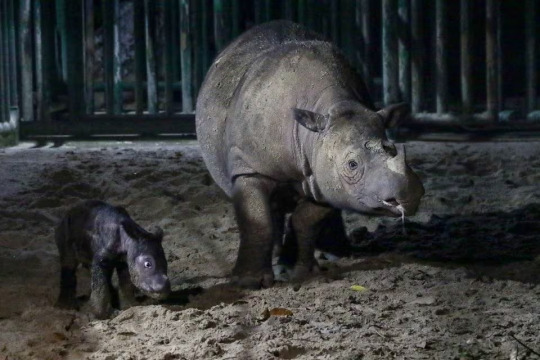
Important progress was made in saving the Sumatran Rhinoceros
Species Concerned: Sumatran Rhinoceros (Dicerorhinus sumatrensis)
Family: Rhinoceros Family (Rhinocerotidae)
Sources: Here and here
Distinguished from the other 4 rhinoceros species by its relatively small size, 2 horns and short black fur (which is barely present in adults, but very prominent in calves) the Sumatran Rhinoceros is one of the rarest mammals on earth, with an estimated population size of roughly 30-80 individuals. Having had its numbers drastically reduced by poaching, habitat loss and extreme weather events, the species is now threatened by its own small population size - found only in tiny scattered populations across Sumatra and Borneo, it is now extremely difficult for wild members of this species to find mates, and where mating does occur such a small population size considerably limits genetic diversity, increasing the risk of calves being born with health complications. To combat this numerous efforts to breed Sumatran Rhinoceroses in captivity have been developed, and as of November of 2023 the results have been promising; last year saw the birth of 2 Sumatran Rhinoceros calves at the Way Kambas National Park in Lampung, Sumatra.
The youngest of 2023's calves, a male, is the son of a female named Delilah who was herself the second calf to have ever been born at the park's Sumatran Rhinoceros Sanctuary (a site where members of this species are cared for and protected from illegal poaching while breeding.) This marks the first-ever instance of a captive-born Sumatran Rhinoceros giving birth, and therefore represents a key step in establishing a healthy captive breeding population of Sumatran Rhinoceroses to help preserve and increase the genetic diversity of wild populations. The calf's father, named Harapan, was born in Cincinnati Zoo in the USA, and it is hoped that the careful incorporation of the handful of Sumatran Rhinoceroses held in zoos into wild breeding programs can further help to increase the species' genetic diversity in the future. While extensive action is still needed for the Sumatran Rhinoceros to be saved, the park's work this year represents a significant step towards the species' conservation.
--------------------------------------------
Have a great new year!
#Happy new year!#2023#2024#zoology#biology#mammalogy#paleontology#botany#ornithology#conservation#animal#animals#plant#plants#wildlife#turtwig#de winton's golden mole#golden mole#golden moles#Indochinese green magpie#green magpie#green magpies#Thismia kobensis#Thismia#Sumatran rhinoceros#rhinoceros#rhinoceroses
39 notes
·
View notes
Text
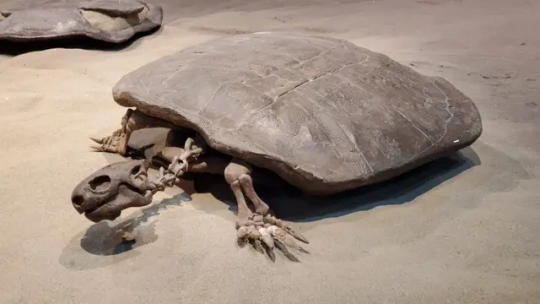

A fossilized egg laid by an extinct, human-sized turtle holds a rare jackpot
These turtles lived in the Cretaceous period and were wiped out with the dinosaurs.
In the central Chinese province of Henan, a farmer discovered a black orb with a vaguely blue tint, about the size of a billiards ball. While he and initial researchers thought they had found a dinosaur egg, it turned out to be something much rarer: a huge fossilized turtle egg—with an intact turtle embryo still inside. The biggest turtle eggs today are just a few inches long, with papery thin shells. The newfound fossil is massive by comparison. Paleontologists concluded that the egg belongs to the nanhsiungchelyids, an extinct group of land-dwelling turtles that lived alongside dinosaurs 145 to 66 million years ago, during the Cretaceous period. The turtle parent who laid the hefty egg was likely quite the beast—researchers estimate that its shell was more than 5 feet and 4 inches long. The new paper was published today in the Proceedings of the Royal Society B...
Read more: https://www.popsci.com/animals/fossilized-turtle-egg-has-embyro-intact
64 notes
·
View notes
Text
Round 2 - Arthropoda - Thecostraca




(Sources - 1, 2, 3, 4)
Thecostraca is is a class of crustaceans, many of which have planktonic larvae which become sessile or parasitic as adults. The most well-known group are the Barnacles (subclass Cirripedia), but Thecostraca also includes the parasitic Ascothoracida, and the mysterious Facetotecta.
Facetotecta, comprising only the genus Hansenocaris, are known only from their larvae (image 3) and adults have yet to be recognized, though some scientists believe they may actually be larval tantulocaridans.
Ascothoracidans are parasites of echinoderms and cnidarians. Most genera are meso and endoparasitic (living inside the host) while some are ectoparasitic (living on the outside of the host). They are similar in anatomy to copepods, with six pairs of legs, an abdomen with four segments, a telson, and a bivalved carapace. They feed on their host via piercing and sucking mouthparts, and some more advanced species also absorb nutrients through the carapace. They are sexually dimorphic, in many cases so much so that the smaller males will live inside the larger female’s mantle cavity.
Barnacles (subclass Cirripedia) are more well-known than other Thecostracans. Adult barnacles are sessile filter feeders, except for the infraclass Rhizocephala, which are parasites of other crustaceans. Barnacles attach themselves to a surface as adults, be that a rock, the shell of a mollusc, a ship, or a large animal such as a whale. They come in two common forms: acorn barnacles which grow their shells directly on a surface (image 4) and goose barnacles which attach themselves via a stalk (image 1). Barnacles have a carapace made of six calcareous plates, with a lid made of four more plates. They attach themselves to the substrate by means of a cement gland at the base of their antennae. Eight pairs of thoracic limbs, called cirri, extend from the carapace to filter plankton from the water and bring it towards the mouth. The hairs on these limbs are very sensitive to touch, and help the barnacle sense the world around them. They also have three simple eyes (ocelli) which can sense changes in light, allowing them to close their plates quickly if a shadow is detected.
Thecostracans have nauplius larvae, characterised by a head with antennules, antennae, mandables, and a single eye, three pairs of limbs, a carapace, and a telson. Barnacle larvae are brooded by the parent until their first moult, after which they are released to swim freely using setae.
The oldest known thecostracan fossil is dated from the Middle Cambrian. Traces of the parasitic forms have been dated from the Cretaceous.

Propaganda under the cut:
Barnacles have the longest penis (relative to body size) of any living animal. You can see it in action in the above gif and in this video.
Most barnacles are not parasitic (other than hitching a ride) and usually do no harm to the large animals they attach to. An overload of barnacles tends to be a symptom of an underlying issue, such as the animal being unable to shed its skin. Non-professionals scraping or pulling barnacles off of whales and turtles often does more harm than good for the affected animal!
12th-18th Century Europeans thought that Brants and Barnacle Geese emerged, fully formed, from Goose Barnacles. Gerald of Wales claimed to have seen the birds hanging down from pieces of timber, William Turner accepted the theory, and John Gerard claimed to have seen the birds emerging from their shells. In County Kerry, until relatively recently, Catholics abstaining from meat during Lent could still eat this bird because it was considered a fish.
As filter-feeders, barnacles play an important role in the ecosystem: not only for transferring nutrients up the food chain, but also for keeping the water clean.
When a barnacle chooses its home, it produces a biological glue made of six different proteins. While the glue hardens, it accumulates limestone salts, turning into a concrete-like shell. Barnacle glue is six times stronger than any manmade glue. Scientists are trying to replicate this glue for use in the fields of engineering, construction and medicine, where it can be used as a biological sealant during or post-surgery.
#i could add SO MUCH more but I am trying to make these descriptions shorter both for your sake and for mine#looking forward to narrowing these down to smaller groups in later rounds where I won’t have to write So Dang Much#anyway crabs are coming in the next one#round 2#animal polls#arthropoda#thecostraca
37 notes
·
View notes
Text

Diuqin is a fascinating genus of theropod dinosaurs that lived during the Late Cretaceous period, specifically in the Santonian age, around 86 to 84 million years ago. Its remains were discovered in the Bajo de la Carpa Formation in Neuquén Province, Patagonia, Argentina. This dinosaur belongs to the Unenlagiinae subfamily, a group of long-snouted paravian theropods closely related to birds. The genus name "Diuqin" is derived from the Mapudungun language, meaning "bird of prey," reflecting its predatory nature. The species name, Diuqin lechiguanae, pays homage to Lechiguana, a character from an Argentine film.
The fossil record of Diuqin is limited but significant. The holotype specimen includes parts of the left humerus and fragments of sacral and caudal vertebrae. Despite its incomplete nature, the discovery of Diuqin fills a crucial gap in the evolutionary history of unenlagiines, bridging a temporal gap of at least 15 million years between older and younger members of this clade. Its humerus exhibits unique features that suggest it represents a transitional stage in the evolution of unenlagiines, providing valuable insights into the morphology and adaptations of these dinosaurs.
Diuqin's paleoenvironment was likely warm and semi-arid, as indicated by the diverse array of fossils found in the Bajo de la Carpa Formation. This formation has yielded remains of various other dinosaurs, including theropods, sauropods, and ornithopods, as well as birds, turtles, and crocodile-like reptiles. The discovery of Diuqin not only enriches our understanding of unenlagiine evolution but also sheds light on the broader ecosystem dynamics of the Late Cretaceous in South America. Its existence underscores the diversity and complexity of prehistoric life in this region.
#art#artwork#artist#drawing#illustration#sketch#dino#dinosaur#prehistoric#paleontology#paleoart#dinosaurs#extinct#theropod#diuqin#raptor
17 notes
·
View notes